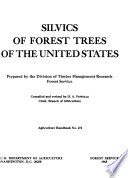

Lastly, the book addresses potential future trends in timber taxation and how they may impact timber owners. With ongoing changes in tax policy and environmental regulations, timber owners must stay informed about how these shifts could affect their financial outcomes. The author discusses emerging trends, such as sustainability initiatives and their implications for tax incentives, providing a forward-looking perspective that encourages timber owners to adapt their strategies in response to changing circumstances.
Continue readingThe book emphasizes the importance of recognizing timber as a valuable asset that requires proper management and understanding of tax implications. Timberland owners must comprehend how their timber resources can be leveraged for financial gain while also being aware of the tax responsibilities that accompany ownership. This involves not only understanding the valuation of timber but also how it fits into broader financial planning and investment strategies. The book provides insights into how timber can appreciate in value, the factors that affect this appreciation, and how owners can maximize their returns through informed decision-making.
Continue readingOne of the key focuses of the book is the various tax deductions and credits available specifically for timber owners. This includes discussions on reforestation expenses, depletion allowances, and other relevant deductions that can significantly impact the taxable income of timber owners. The author details how these deductions work, eligibility criteria, and the documentation required to claim them. By understanding these tax benefits, timber owners can effectively reduce their tax burden and enhance their overall profitability.
Continue readingThe book delves into the intricacies of capital gains taxation when it comes to the sale of timber. Timber owners need to be aware of how the IRS classifies timber sales and the implications for capital gains tax. The author explains the difference between short-term and long-term capital gains and how the holding period of timber can affect tax liabilities. Additionally, strategies for minimizing capital gains taxes through careful planning and timing of sales are discussed, providing valuable insights for timber owners looking to optimize their financial outcomes.
Continue readingEstate planning is a critical consideration for timber owners, and the book addresses how timber assets can be effectively integrated into an estate plan. The author discusses the importance of succession planning, particularly in ensuring that timberland remains within the family and continues to generate income for future generations. Various estate tax considerations are explored, including the potential for tax liabilities upon inheritance and strategies for minimizing these impacts. This section serves as a guide for timber owners to create a sustainable legacy while managing their tax responsibilities.
Continue readingEffective record-keeping is essential for timber owners to manage their tax obligations accurately. The book outlines best practices for maintaining detailed records of timber sales, expenses, and other relevant financial transactions. The author emphasizes the importance of documentation in substantiating claims for deductions and credits during tax filing. This section provides practical tips and tools for organizing financial records and ensuring compliance with IRS requirements, which can ultimately save timber owners time and money.
Continue readingThe book provides a comprehensive overview of federal tax regulations that specifically pertain to timber ownership. Understanding these regulations is crucial for timber owners to avoid pitfalls and ensure compliance. The author breaks down complex tax codes into manageable sections, making it easier for readers to grasp the essentials. This knowledge equips timber owners with the tools needed to navigate the often-complicated tax landscape, helping them make informed decisions about their timber assets.
Continue reading